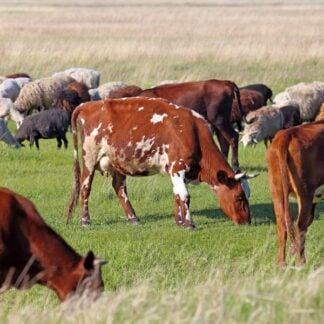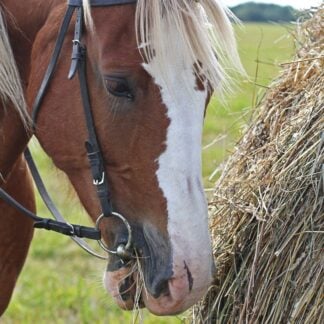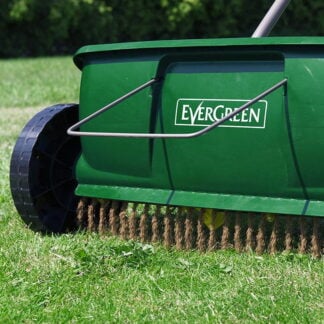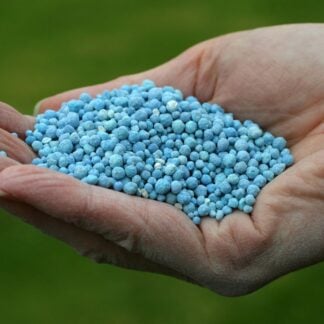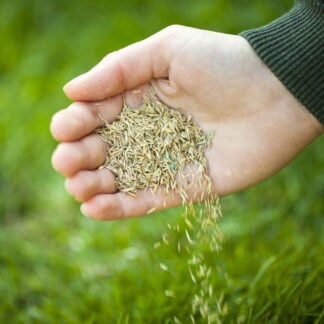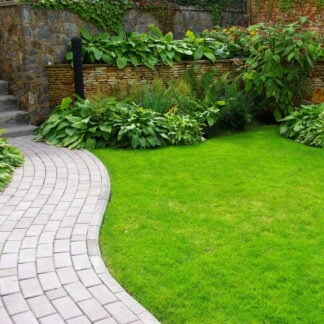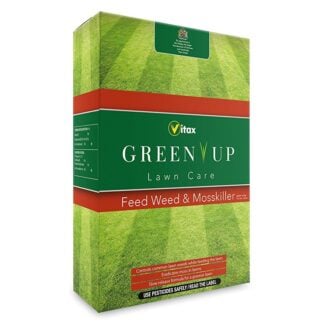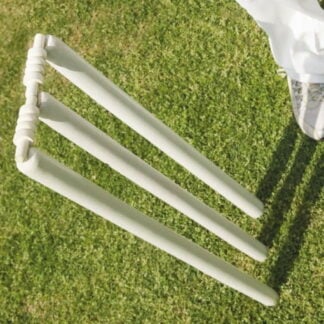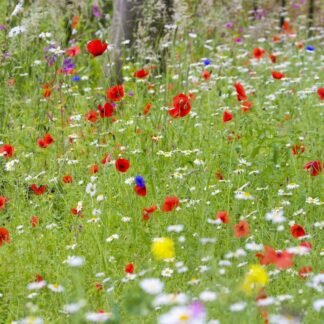 Quite often you will read or hear some technical seed terms that you probably don’t understand, below is list of some of the main technical seed terms that you may come across.
Quite often you will read or hear some technical seed terms that you probably don’t understand, below is list of some of the main technical seed terms that you may come across.
A Glossary of Technical Seed Terms
Annual – A plant that germinates, flowers and dies in a year or one season.
Biennial – A plant that takes two years to complete its lifecycle unless under extreme weather conditions.
Perennial – A plant that lives for more than two years. They grow and bloom over the spring and summer and die back during the winter.
Diploid – Has two chromosomes per cell, therefore less cell content relative to cell wall material, resulting in a higher level of dry matter. Diploids are mainly used in permanent pastures due to high tiller rates and durability.
Tetraploid – Has four chromosomes per cell, therefore more cell content relative to cell wall material, resulting in a lower level of dry matter. For this reason Tetraploids tend to be sweeter and more palatable with a higher nutritional value.
Early Bite Grazing – Providing early grass for dairy cows and sheep
Green Manuring – Ploughing under or adding green manure crops, e.g. mustard while they are green or after they have flowered. This improves the soil by adding nutrients and increasing the percentage of organic matter, improving the quality of the soil.
Catch Crop – Grown in-between main crops as green manure or as a feed for livestock e.g. Stubble Turnips.
Fusarium – A large genus of fungi found in soil.
Nematode – Simple multicellular animal. The impact on crops can be positive and negative, some will damage crops and others will prevent the crop from other pest damage.
Inflorescences – A cluster of flowers positioned on a stem, generally in a fixed pattern.
Rhizomes – The horizontal stem of a plant from which the plant grows. Tends to be sweeter and more palatable with a higher nutritional value.
-

Agricultural Grasses (37)
-

Cutting & Grazing (4)
-

Environmental Mixes (5)
-

Equine Mixes (8)
-

Equipment (10)
-

Fertilisers (11)
-

Game Birds & Poultry Pens (2)
-
%22%20transform%3D%22translate(.6%20.6)%20scale(1.26563)%22%20fill-opacity%3D%22.5%22%3E%3Cellipse%20fill%3D%22%23cc7a5f%22%20rx%3D%221%22%20ry%3D%221%22%20transform%3D%22rotate(-23.2%20406%20-83.5)%20scale(106.46892%2057.74383)%22%2F%3E%3Cellipse%20fill%3D%22%235a5b8c%22%20rx%3D%221%22%20ry%3D%221%22%20transform%3D%22matrix(29.10996%20-26.21073%2030.93075%2034.35208%20143.3%2073.2)%22%2F%3E%3Cellipse%20fill%3D%22%2379460d%22%20rx%3D%221%22%20ry%3D%221%22%20transform%3D%22matrix(-74.24038%20-18.27281%209.83273%20-39.94928%20208.5%20181.7)%22%2F%3E%3Cellipse%20fill%3D%22%2342610c%22%20rx%3D%221%22%20ry%3D%221%22%20transform%3D%22matrix(-31.89003%2017.53503%20-16.73739%20-30.43941%209.8%2063.3)%22%2F%3E%3Cellipse%20fill%3D%22%238b2d47%22%20cx%3D%2256%22%20cy%3D%22240%22%20rx%3D%2270%22%20ry%3D%2226%22%2F%3E%3C%2Fg%3E%3C%2Fsvg%3E)
Game Cover Crops (20)
-

Garden Seeds (20)
-

Grass Seed (23)
-
%22%20transform%3D%22translate(.6%20.6)%20scale(1.26563)%22%20fill-opacity%3D%22.5%22%3E%3Cellipse%20fill%3D%22%23a6a3ba%22%20rx%3D%221%22%20ry%3D%221%22%20transform%3D%22matrix(-26.84416%2073.92381%20-57.08844%20-20.73068%20120.5%20118)%22%2F%3E%3Cellipse%20fill%3D%22%233f4912%22%20cx%3D%2245%22%20cy%3D%22241%22%20rx%3D%22255%22%20ry%3D%2239%22%2F%3E%3Cellipse%20fill%3D%22%23425000%22%20rx%3D%221%22%20ry%3D%221%22%20transform%3D%22matrix(-27.18905%20.88046%20-3.8161%20-117.8434%2016.9%20177.6)%22%2F%3E%3Cellipse%20fill%3D%22%23b8c76f%22%20rx%3D%221%22%20ry%3D%221%22%20transform%3D%22rotate(125%2099.6%2067)%20scale(71.21693%2038.88793)%22%2F%3E%3Cellipse%20fill%3D%22%23726d8d%22%20cx%3D%22117%22%20cy%3D%22187%22%20rx%3D%2279%22%20ry%3D%2242%22%2F%3E%3C%2Fg%3E%3C%2Fsvg%3E)
Grazing Mixes With Clover (5)
-
%22%20transform%3D%22translate(.6%20.6)%20scale(1.26563)%22%20fill-opacity%3D%22.5%22%3E%3Cellipse%20fill%3D%22%23d5cff9%22%20rx%3D%221%22%20ry%3D%221%22%20transform%3D%22matrix(2.7787%2048.19147%20-226.87678%2013.08163%20123%2032.7)%22%2F%3E%3Cellipse%20fill%3D%22%23304000%22%20rx%3D%221%22%20ry%3D%221%22%20transform%3D%22matrix(-243.33128%2076.2554%20-22.22466%20-70.91898%20159.7%20212.2)%22%2F%3E%3Cellipse%20fill%3D%22%232b3600%22%20cx%3D%22210%22%20cy%3D%22235%22%20rx%3D%2267%22%20ry%3D%2267%22%2F%3E%3Cellipse%20fill%3D%22%237b822d%22%20cx%3D%2267%22%20cy%3D%22144%22%20rx%3D%22174%22%20ry%3D%2250%22%2F%3E%3Cellipse%20fill%3D%22%238f8d9a%22%20rx%3D%221%22%20ry%3D%221%22%20transform%3D%22matrix(128.3648%202.4825%20-.63068%2032.61098%20186.4%2069)%22%2F%3E%3C%2Fg%3E%3C%2Fsvg%3E)
Grazing Mixes Without Clover (9)
-

Green Manure Crops (23)
-
%22%20transform%3D%22translate(.6%20.6)%20scale(1.26563)%22%20fill-opacity%3D%22.5%22%3E%3Cellipse%20fill%3D%22%234f5a15%22%20cx%3D%2274%22%20cy%3D%22224%22%20rx%3D%2282%22%20ry%3D%2282%22%2F%3E%3Cellipse%20fill%3D%22%23313a02%22%20rx%3D%221%22%20ry%3D%221%22%20transform%3D%22rotate(-78.2%20258.4%20-31.6)%20scale(117.38926%2031.00042)%22%2F%3E%3Cellipse%20fill%3D%22%23b5c07c%22%20rx%3D%221%22%20ry%3D%221%22%20transform%3D%22matrix(-249.42764%2053.01748%20-14.34474%20-67.4867%2087%2046.9)%22%2F%3E%3Cellipse%20fill%3D%22%23737e3a%22%20rx%3D%221%22%20ry%3D%221%22%20transform%3D%22matrix(49.99886%20-29.21697%2033.56314%2057.43642%20140.8%20119.8)%22%2F%3E%3Cellipse%20fill%3D%22%2398a35f%22%20rx%3D%221%22%20ry%3D%221%22%20transform%3D%22matrix(-38.14139%208.1768%20-9.2251%20-43.03125%2058.3%20157.6)%22%2F%3E%3C%2Fg%3E%3C%2Fsvg%3E)
Green Manures (4)
-
%22%20transform%3D%22translate(.6%20.6)%20scale(1.26563)%22%20fill-opacity%3D%22.5%22%3E%3Cellipse%20fill%3D%22%233b4800%22%20rx%3D%221%22%20ry%3D%221%22%20transform%3D%22matrix(-.316%20-60.35224%20157.19275%20-.82307%2024.5%20195.7)%22%2F%3E%3Cellipse%20fill%3D%22%23e1def4%22%20rx%3D%221%22%20ry%3D%221%22%20transform%3D%22matrix(-16.96975%2071.23156%20-239.2177%20-56.9897%20132.2%2057)%22%2F%3E%3Cellipse%20fill%3D%22%239786ff%22%20cx%3D%22228%22%20cy%3D%2213%22%20rx%3D%2252%22%20ry%3D%2238%22%2F%3E%3Cellipse%20fill%3D%22%23546304%22%20rx%3D%221%22%20ry%3D%221%22%20transform%3D%22matrix(-2.61844%2034.83143%20-90.5235%20-6.80507%2032%20186.9)%22%2F%3E%3Cellipse%20fill%3D%22%2382808b%22%20rx%3D%221%22%20ry%3D%221%22%20transform%3D%22matrix(-7.97125%20-19.41125%20105.15469%20-43.18187%20126.7%20231.1)%22%2F%3E%3C%2Fg%3E%3C%2Fsvg%3E)
Landscape Seeds (3)
-
%22%20transform%3D%22translate(.6%20.6)%20scale(1.26563)%22%20fill-opacity%3D%22.5%22%3E%3Cellipse%20fill%3D%22%233a5400%22%20rx%3D%221%22%20ry%3D%221%22%20transform%3D%22matrix(3.34972%20106.07826%20-64.77578%202.04548%20119.7%20125)%22%2F%3E%3Cellipse%20fill%3D%22%23fff%22%20cx%3D%22229%22%20cy%3D%22126%22%20rx%3D%2235%22%20ry%3D%22255%22%2F%3E%3Cellipse%20fill%3D%22%23fff%22%20cx%3D%2220%22%20cy%3D%2268%22%20rx%3D%2230%22%20ry%3D%22255%22%2F%3E%3Cellipse%20fill%3D%22%23285826%22%20rx%3D%221%22%20ry%3D%221%22%20transform%3D%22matrix(10.59821%20-43.14272%2043.93623%2010.79314%20118.6%20114.6)%22%2F%3E%3Cellipse%20fill%3D%22%23fff%22%20rx%3D%221%22%20ry%3D%221%22%20transform%3D%22matrix(-4.00537%20-254.96854%2027.93346%20-.43881%20236%20153)%22%2F%3E%3C%2Fg%3E%3C%2Fsvg%3E)
Lawn Feed - Weed & Moss Killer (1)
-
%22%20transform%3D%22translate(.6%20.6)%20scale(1.26563)%22%20fill-opacity%3D%22.5%22%3E%3Cellipse%20fill%3D%22%23a7b86c%22%20rx%3D%221%22%20ry%3D%221%22%20transform%3D%22matrix(248.57146%20-56.89667%2011.057%2048.30604%20172%20225)%22%2F%3E%3Cellipse%20fill%3D%22%232c2b4b%22%20rx%3D%221%22%20ry%3D%221%22%20transform%3D%22matrix(-40.39834%203.1904%20-8.82528%20-111.75011%2072.5%20117.5)%22%2F%3E%3Cellipse%20fill%3D%22%23794d04%22%20rx%3D%221%22%20ry%3D%221%22%20transform%3D%22rotate(152.9%2089.7%2029.9)%20scale(88.84689%2065.12872)%22%2F%3E%3Cellipse%20fill%3D%22%231b2a34%22%20rx%3D%221%22%20ry%3D%221%22%20transform%3D%22matrix(-22.18365%209.27962%20-12.95418%20-30.96795%20189.6%2082)%22%2F%3E%3Cellipse%20fill%3D%22%23b5c370%22%20cx%3D%22202%22%20cy%3D%22240%22%20rx%3D%2273%22%20ry%3D%2223%22%2F%3E%3C%2Fg%3E%3C%2Fsvg%3E)
Renovation Mixes (4)
-

Silage Mixes (6)
-

Sport Seed Mixtures (5)
-

Wildflowers (18)

